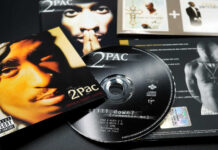For the first time in 27 years, the United States government is revising its racial and ethnic classifications to more precisely quantify Hispanics and persons of Middle Eastern and North African descent living in the country.
The Office of Management and Budget’s announcement of changes to the minimum racial and ethnic groups is the most recent attempt to classify and describe American citizens. The federal government generates data that reflect a more varied society, and this changing process typically reflects societal opinions and immigration.
According to studies, many Hispanics either don’t know what to say or choose “some other race” when asked about their race on its own. This is likely due to their belief that race and ethnicity are synonymous. Respondents can choose several categories simultaneously when asked about race and ethnicity by adding a Middle Eastern and North African category. This means that in addition to “Black,” “American Indian,” and “Hispanic,” they will also be able to choose “Some Other.”
Words like “Negro” and “Far East,” which are now generally seen as derogatory, and the phrases “majority” and “minority,” which do not adequately portray the intricate racial and ethnic variety of the country, are also removed from official formats. Beyond the basic requirements, the changes promote the collecting of more specific racial and ethnic data, such as “Haitian” or “Jamaican” for someone who ticks “Black.”
As the white population dwindles, these changes will have far-reaching effects on health statistics, legislative redistricting, civil rights legislation, and maybe even politics. Consistent data across agencies and numbers that may aid in enforcing civil rights legislation were the goals of the first federal standards on race and ethnicity, which were published in 1977. In 1997, when they were last revised, five racial categories were established: white, Asian, Native Hawaiian or other Pacific Islander, Black or African American, and American Indian or Alaska Native. Respondents were allowed to choose more than one racial category. We separated the minimal ethnic categories into non-Hispanic, Hispanic, and Latino.
Some disagree with the most recent changes. Despite prior studies by the U.S. Census Bureau showing no significant differences among Afro-Latino respondents, whether the questions were asked individually or jointly, some Afro-Latinos contend that merging the race and ethnicity questions would diminish their numbers and representation in the statistics. While merging racial and ethnic questions allows for many responses, Mozelle Ortiz, whose ancestry is mixed Afro-Puerto Rican, expressed concern that the revisions may erase this identity.














